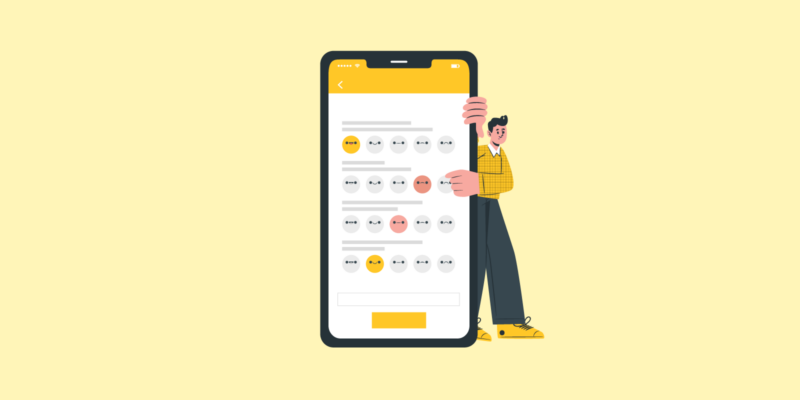Using surveys seems like a no-brainer. You type in a few questions, add the online survey to your website, and ignore it.
But adding just any sample survey without carefully setting clear goals and following up on the results isn’t going to do much good. Instead, decide what you want to accomplish and use one of our survey examples as a jumping-off point to meet your objectives.
In this article
Why Are Surveys Important?
A well-executed survey with the right questions can give you a clearer insight into what your customers or workers are thinking. It makes it easier to identify problems and understand expectations while providing concrete data to base decisions on.
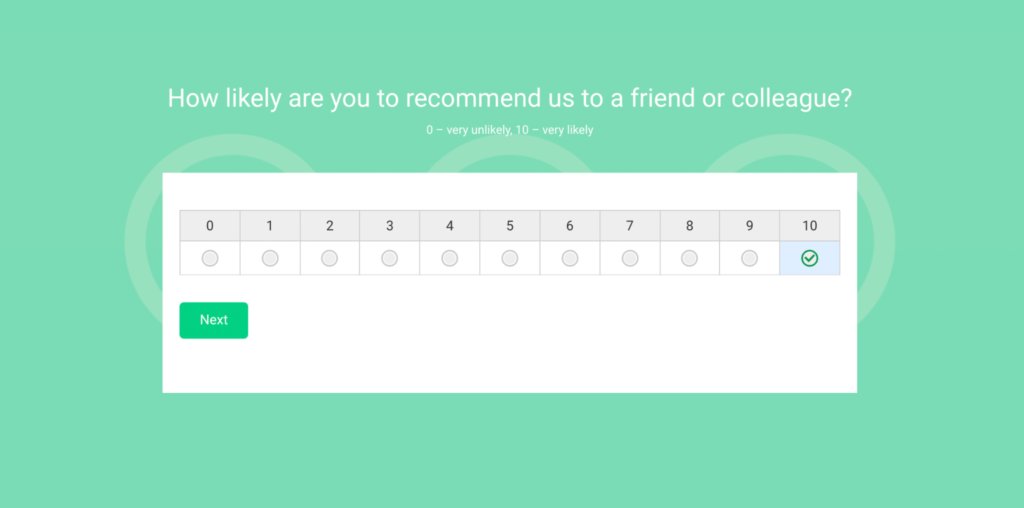
A good survey example can:
- Help you understand the feelings or views of a group.
- Identify problems or issues that exist with products or systems.
- Gather more data. The more you have, the less bias you’ll have in the data set, making it more reliable.
- Help you create solutions based on its data.
Nowadays, creating a survey template for your website is pretty straightforward. You can make one without writing any code using a form builder. These forms can be static on your website, or you can create dynamic forms that pop up when prompted by a user’s actions. This is great at protecting your privacy while also staying in touch with your website visitors.
5 Examples of Surveys Worth Implementing Into Your Business
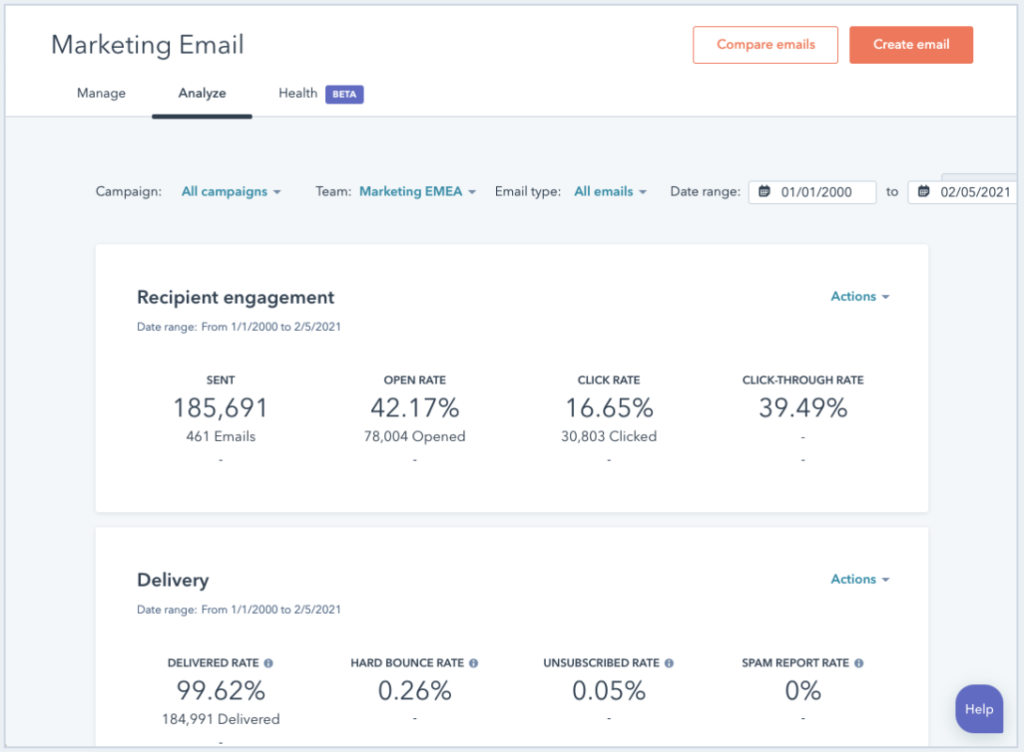
1. Marketing Research and Interest
Market research surveys are one of the most common survey types. These questionnaires help you understand your target demographic better by showing you what competitor products they purchase, what they like about your options, and what they would change.
With that information, you can make key changes to products or services to fill market gaps or refrain from launching new products that don’t meet customer needs.
You can conduct market research with respondents from anywhere. Getting feedback from your target audience is important, but you’ll also want responses from people who aren’t current customers.
2. Customer Feedback and Satisfaction
Unlike market research, customer feedback surveys are aimed at respondents who already use and are familiar with your brand. Key times to ask for feedback include after a user interacts with customer service or after they have made a purchase.
By asking for feedback after a recent interaction, you can see how satisfied your customers are with your products or the level of care your customer service team provides. Tracking each experience is even easier with a support ticket system in place or a customer service management software like Zendesk.
Ticketing also helps with internal tracking. You can keep an eye on individual cases or look at your customer service experience as a whole.
You can also revisit cases on your CRM (Customer Relationship Management) software to compare responses, check for common problems your customers bring up, and see if they seem happy in general or if you could improve satisfaction.
3. Usability/User Experience Surveys
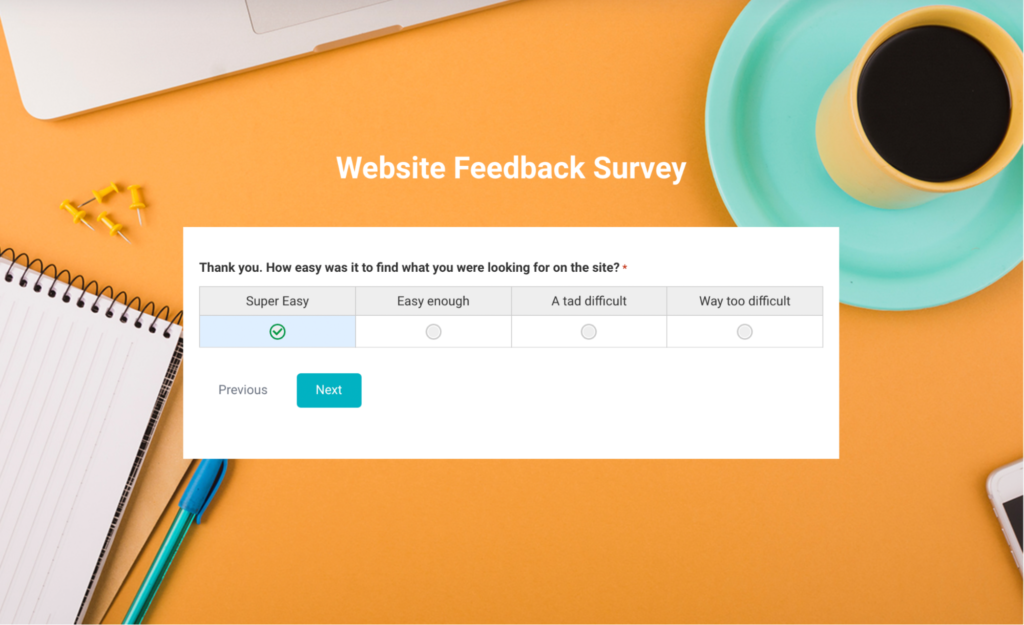
User experience surveys are great for products or services users interact with frequently, like SaaS or apps. If your product has a bit of a learning curve, this is an excellent survey type to take advantage of.
After all, you want to make sure you aren’t losing customers to easy-to-address issues.
User experience surveys help you improve functionality and work on confusing issues your tools might have. That way, you can directly see how efficient and dependable customers rate your service and work on increasing your retention rate.
To get the most from user experience surveys, it’s a good idea to ask some open-ended questions too. You want to know exactly what your users think, so add a text field for them to describe any issues in detail.
4. Net Promoter Scores
Net Promoter Score (NPS) is a popular metric for measuring customer satisfaction.
It answers the basic question of how likely users are to recommend a product or service to a friend. That helps you determine how satisfied customers are and if they will refer your service to others.
The scores are usually graded on a scale of 1–10, with many companies considering only 9s or 10s as true promoters.
While that may seem a bit extreme, these are the customers who go out of their way to tell others about your product. They are also more likely to make repeat purchases, spend more, and be your customer base’s most loyal.
Using NPS surveys is a good way to gain insight from specific users and identify areas where you may want to make long-term investments. If you focus on keeping your most dedicated customers happy, they’ll go out and promote your business to others.
It’s also incredibly useful to learn more about brand tracking and how it puts your NPS in context. If you want to know more about how customers see you, you can start by conducting market research that focuses on your branding. By measuring metrics like brand awareness, or diving into brand reputation or perception, you learn not only how people feel about you, but also why.
5. Employee Satisfaction and Engagement
Lastly, we want to mention the importance of employee satisfaction surveys. Your workers can be one of your greatest assets.
By having human resources conduct frequent employee engagement and satisfaction surveys, you can keep up to date on how your staff feels.
An employee engagement survey can help measure and analyze the health of your organization. You can see how happy and engaged your workforce is, work on changes you can take to retain your existing employees, and attract new workers.
Survey Question Examples
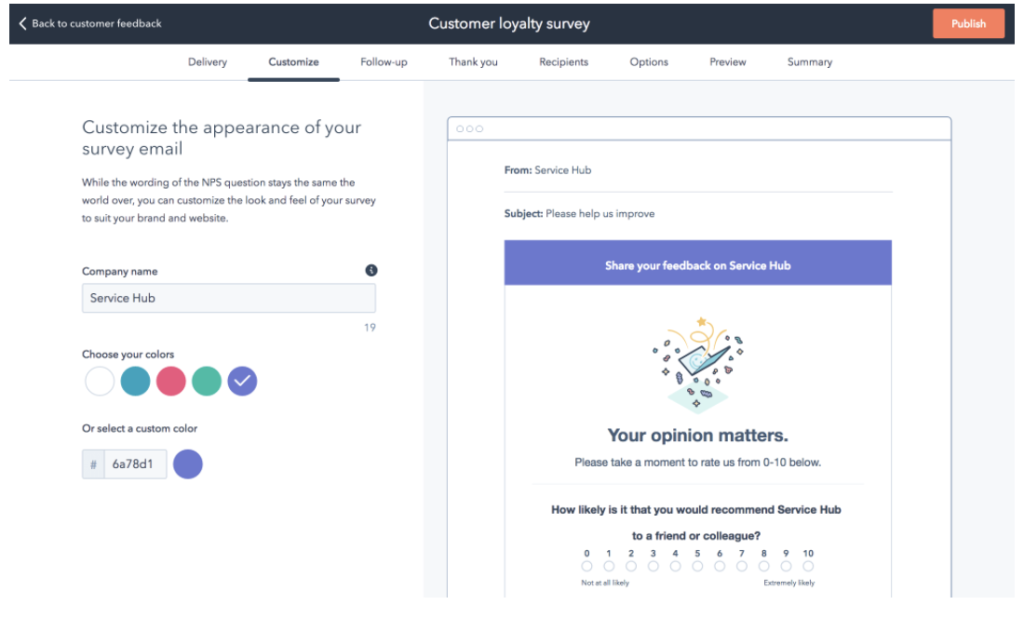
Now that we’ve gone over the five main survey types let’s look at some good survey question examples for each one. That will help you form ideas for what you plan to ask with your survey.
Remember, you might want a mixture of multiple-choice questions and open-ended questions to get the best responses. While open-ended responses provide more detailed data, too many of them could make the survey appear long and, as a result, reduce your response rate.
Customer Service Satisfaction Survey Question Example
A customer satisfaction survey should include a mixture of questions that help you understand what kind of customer you are receiving feedback from and questions about their opinions.
Feedback from both long-term and new users is helpful, but you may want to categorize their responses differently.
With these things in mind, consider asking questions like:
- How long have you been using this product?
- What would you improve if you could make changes?
- What other products did you consider before making your purchase?
Market Research Survey Question Example
These questions should help you understand their opinion of your company, the product or service in question, and get their feedback on the item in question even if they haven’t purchased from you.
Some questions you could include are:
- What does our product or service do that you like or dislike?
- How would you rate our product/service on pricing/ease of use/performance?
- When you think of our brand, what do you feel?
Usability Survey Question Example
User experience surveys are aimed at current customers, so knowing how much experience they have with your product is important. You want to give them the chance to provide direct feedback in addition to ratings on a scale or answering yes/no questions.
Some questions worth including are:
- Were you able to complete your goal using our product?
- How often have you used our product/website?
- Have you used a similar product/service before?
Net Promoter Score Survey Question Example
NPSs follow the same format of responding to questions on a scale of 1–10, but you can change the questions to fit your service and include follow-up questions to understand their score better.
Consider including questions similar to the following:
- What is the main reason you gave us the score you did?
- What could we do to improve your score?
- Was there anything missing from your experience with our product or service?
Employee/Internal Survey Question Example
Employee engagement surveys can help you make effective changes in your workplace. Open-ended responses will get you the most detail, but adding multiple-choice questions can make it faster for workers to respond to the questionnaire.
Here are some employee-related questions:
- Can you work distraction-free when needed, or do you have any concerns about your current work environment?
- Do you feel supported by your coworkers and organization when you need to make changes?
- How do you feel about the frequency and quality of the feedback you receive?
How To Send Out Your Survey
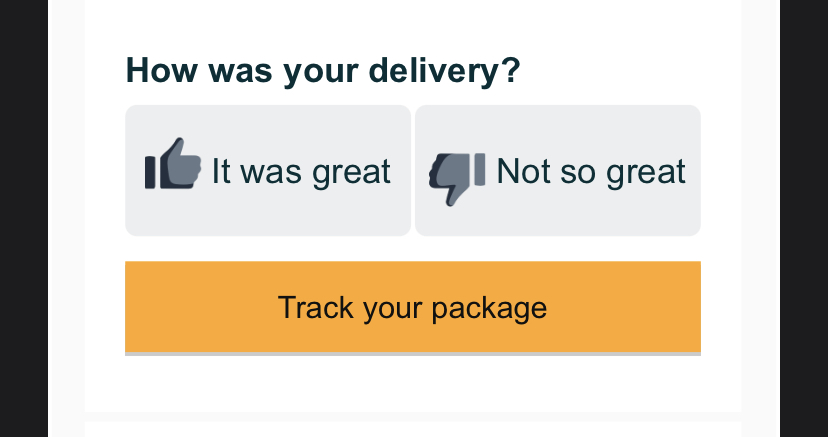
Getting your survey out and getting responses is as important as making it. With the right approach, you can get more answers faster. Here are some of the ways you can go about conducting your survey.
Hire a Market Research Company To Send Out Surveys
Hiring a market research company is probably the most dedicated way to approach this, but whether it’s a viable option depends on the information you want.
Outsourcing the work to an experienced team of analysts will reduce your workload, provide accurate results, and give you a diverse data pool to draw from. That is great for complex market research.
However, it can get expensive quickly. Depending on the size of your organization and the feedback you’re looking to get, it might be out of budget or provide more information than you really need.
Websites and Blogs
Websites or blogs are great places to place a survey. Customers are familiar with surveys here, and they are already interacting with your brand by visiting your website.
You can add popup surveys, embed forms on a page, or quickly create a new page just for your survey with a squeeze page builder. That is a good way to ask for customer feedback. Just be sure to use a plugin or tool that stores your feedback safely.
Random Engagement (Sending Out Your Surveys Randomly)
Have a list of emails or a large social media ad budget? Why not send out your survey at random! While this may not work for every product, this type of surveying yields the most diverse data, with less bias and better distribution.
If you have a fairly straightforward app or product, this could be a good way to send out usability surveys. It’s also an option for businesses with a brick-and-mortar presence.
Social Media
Social media has made it easier than ever for brands to interact with their customers. One way you can take advantage of this is to use your favorite platforms to survey your followers.
Ask your existing community for feedback. That is a great place to post an NPS survey and a few open-ended questions. All you need is a web form creator and then post the survey in your feed.
Keep in mind some platforms may limit the types or number of questions you can ask within their community, so you might need to redirect users to a survey on your website.
Email Surveys
Connecting with users via email is a great way to keep them engaged.
You might already have a newsletter to add a survey or link to. You can send it to your entire list or segment your subscribers to reach only a targeted group. If you have a drag-and-drop email builder, it’s even easier to add a survey that’s on brand and eye-catching.
Email surveys are also a good option for employee satisfaction surveys. Send out a survey at a convenient time for your staff and have them let you know how they feel.
Things To Keep in Mind
To get the best possible results, you should consider the following when planning out your survey examples:
The Survey Size
A good survey is only as strong as its results, and the more responses you get for your survey, the more accurate it tends to be. You should aim to get at least 200 responses before accepting the survey results as being representative of a general opinion.
If your response rate is a bit low, try sending out your survey again in a different way to attract new users. It’s better to wait for a larger sample size than make changes based on inaccurate information.
After all, this isn’t like ordering pizza for a group. You might end up with a bunch of people who happen to like pineapple on their slice, but we know from the internet this can be a divisive issue for the population at large. Much like pineapple on pizza, you want to plan for some errors in your survey results.
The Margin of Error
You also need to consider the margin of error your survey could produce. No survey will be completely accurate, even with simple closed-ended questions. In that sense, you should decide your confidence level, assuming the results are 95% accurate.
There’s some slightly complicated math to calculate the margin of error for a survey, but it involves multiplying the sample proportion, divided by the sample size, by a z*-value. Common z*-values are easy to find online, like the one for a 95% margin of error is 1.96.
Results Alone Aren’t Enough
Collecting responses to your survey is a great step towards making meaningful changes, but results alone aren’t enough. You also want to analyze and act on the information you’ve collected.
Identify common patterns that come up within the data. Then come up with a conclusion based on these responses. If multiple respondents bring up the same issue, you should use these responses to change the problem identified.
Follow up any survey with actionable tasks. Decide what your company should do based on the results and implement changes. That could involve changing your product, marketing approach, or a change in work culture.
Final Thoughts
Including surveys on your website can be a strategic way to learn more about your customers. You can get a glimpse into why they make their choices and what exactly they like about your product or service.
You can then use this information to address their pain points or include suggestions in future releases. It all depends on how you use the data you’ve gathered.
You can learn more about how to get your surveys started with a free Woorise survey template today.


